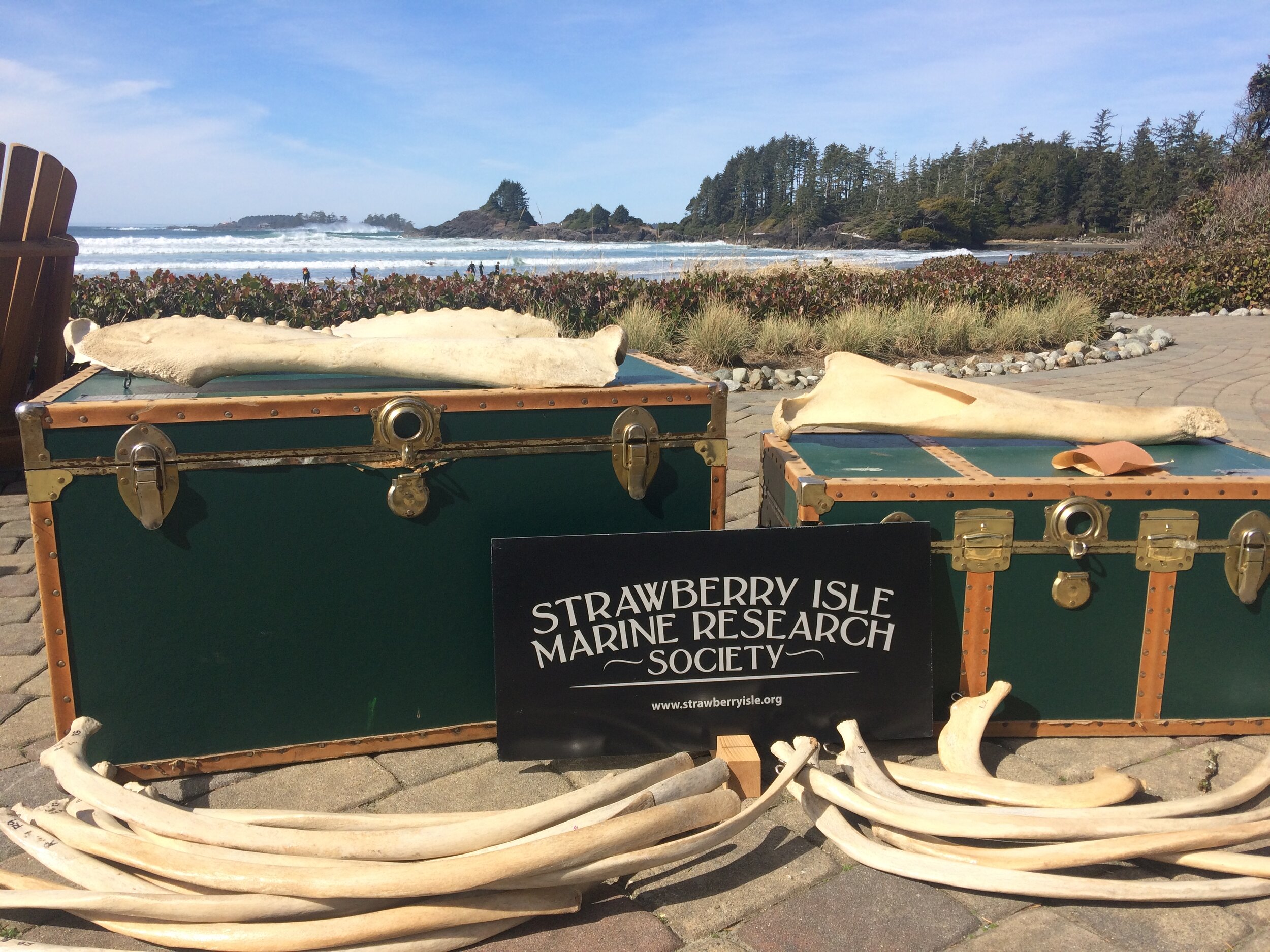BUILD-A-WHALE
Build-A-Whale is an interactive program that aims to educate, engage, and encourage environmental stewardship for our marine wildlife and ecosystems. The program allows participants to assist in constructing the skeleton of an offshore killer whale while learning about the biology, ecology, anatomy, evolution, and conservation of killer whales and other marine mammals. This mobile program has visited many facilities across British Columbia including schools, markets, festivals, aquariums, care homes, and more. The Build-A-Whale program is suitable for all audiences and can be adapted to complement school curriculum and specific events. This hands-on educational tool is a unique way to connect people with the marine environment and inspire positive action towards addressing many ocean conservation issues.
History
On August 29, 1997, a dead killer whale was reported drifting 17 miles offshore of Tofino, off Vancouver Island’s west coast. Extremely determined to retrieve the whale, Rod Palm (SIMRS Founder) towed the body behind his small research vessel towards Strawberry Isle. After 11 hours of traversing Clayoquot Sound, with many fuel and food deliveries from supporting whale-watching vessels, Rod and the whale made it back to shore! A full necropsy was presided over by Dr. Craig Stephen, a vet at Vancouver Island University, with Graeme Ellis (Nanaimo Biological Station), Dr. Jane Watson (Vancouver Island University) and Rod Palm in attendance. A DNA analysis done by Dr. Lance Barrett-Lennard (Vancouver Aquarium) confirmed that this animal was a member of the offshore population of killer whales. Graeme Ellis later identified the saddle patch and dorsal fin of this 5.5m (18ft) orca to be an offshore female known as O120. No clear cause of death was found, though her heavily worn teeth and thin blubber suggest that she may have been old and far removed from her home in more southern waters. A massive cavity extending into the jaw bone may also have been a factor. After many days of chopping, hacking, sweating and swearing, Rod and his team had the bones either buried in the garden, hanging in the sea or boiling in a pot. Once left to bleach in the sun for an entire year, the bones were ready to be treated. Dominique Dupuis (Pipot) organized a crew of volunteers who put in close to 700 hours scrubbing the bones and treating them with several coats of a non-toxic penetrating epoxy. Pipot and Robinson Cook created the ingenious orca-sized framework that supports the skeleton, and shows the animals internal organs. Build-A-Whale was complete and all that hard work paid off!






